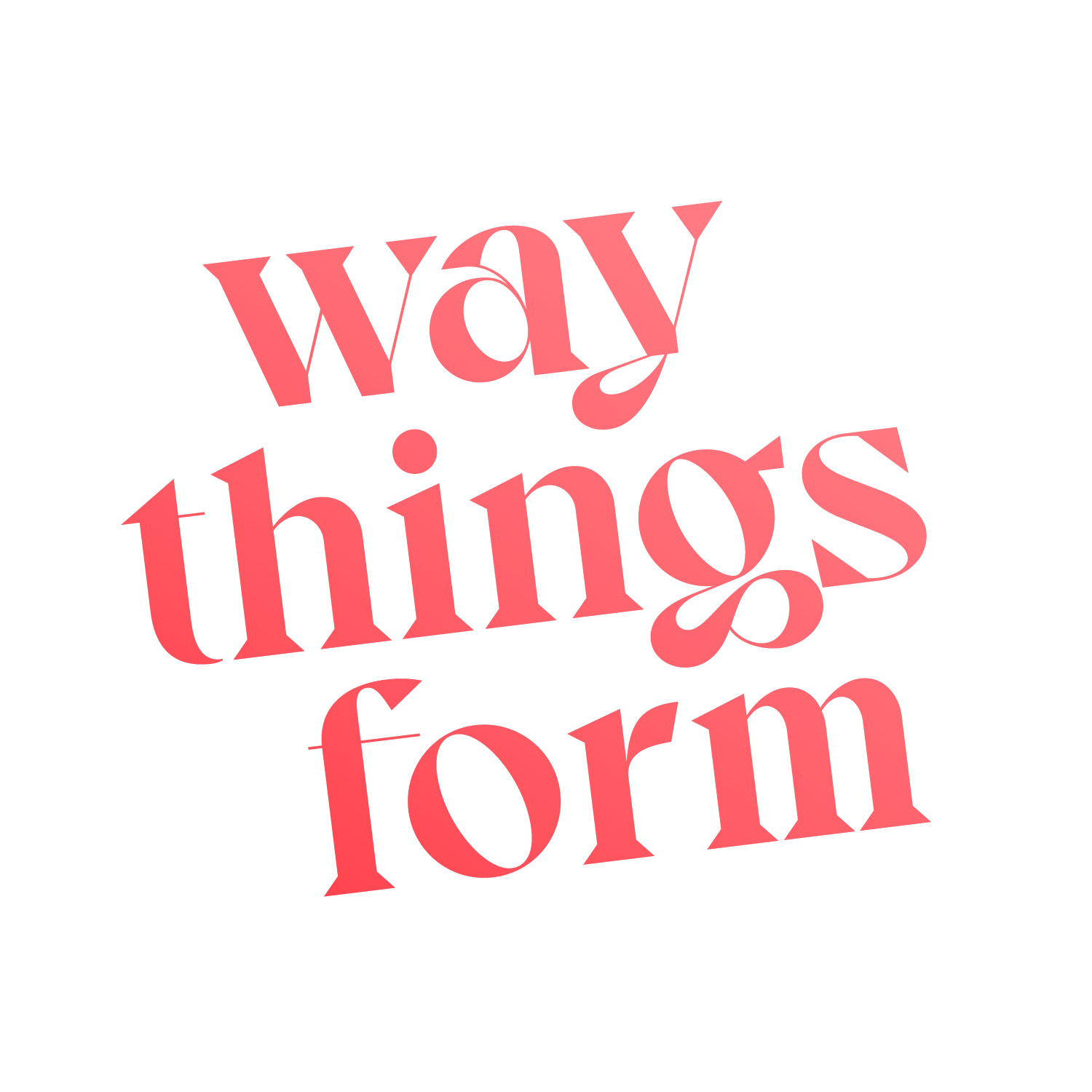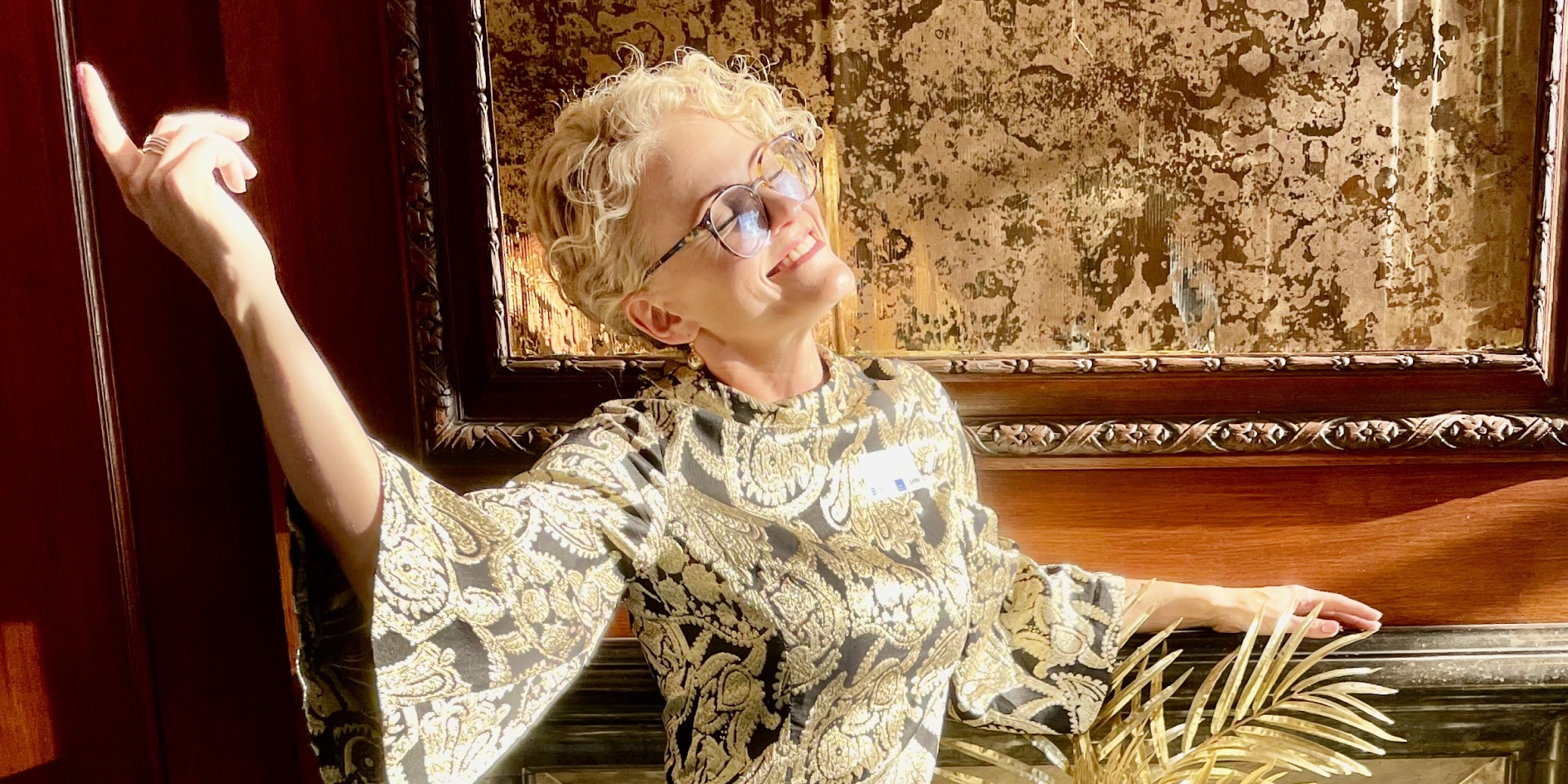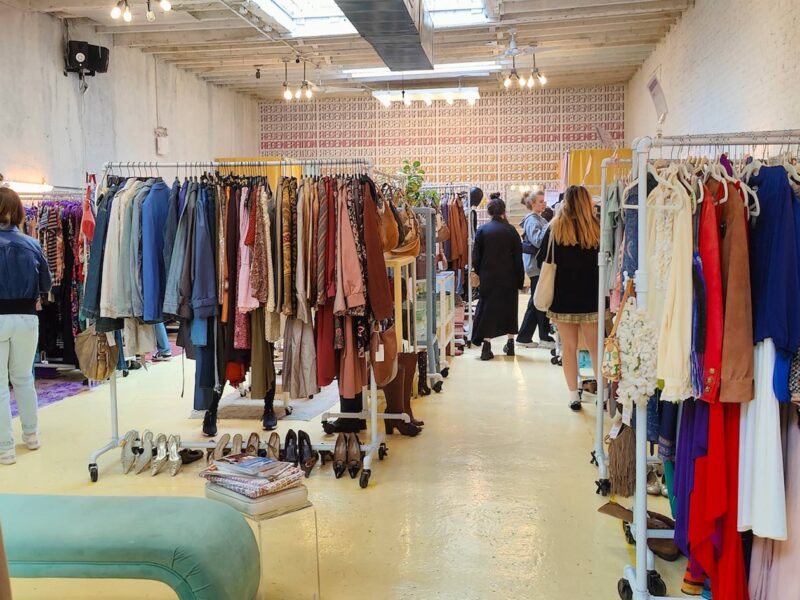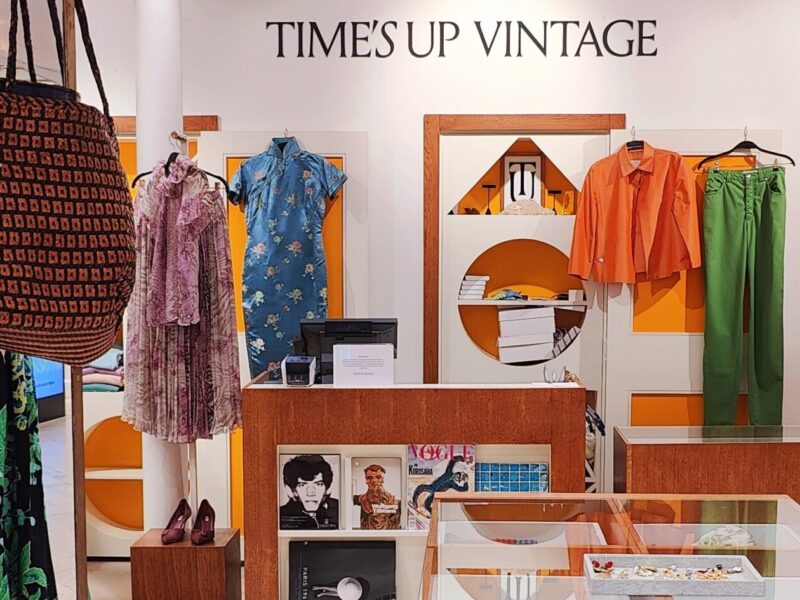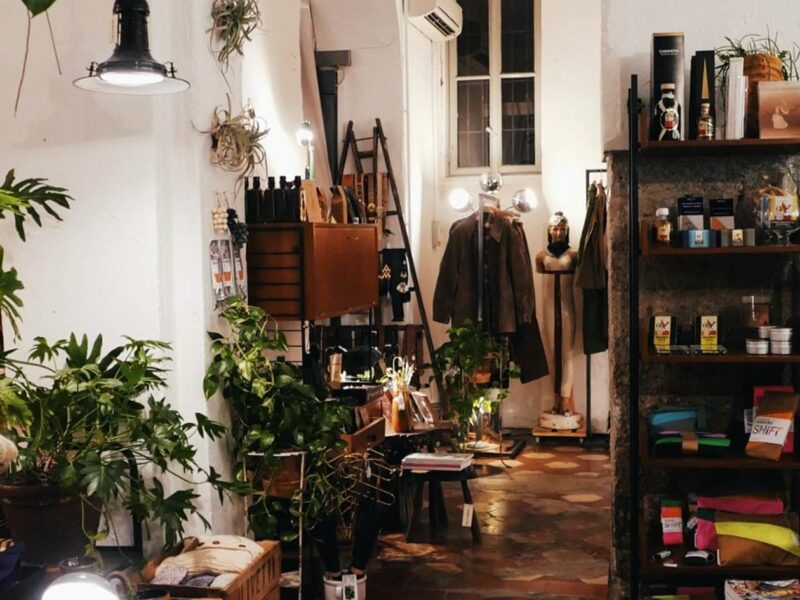The room lights up when Liina Maria enters the scene. When we met for the interview, she wore a bright yellow oversized sweater and a big smile.
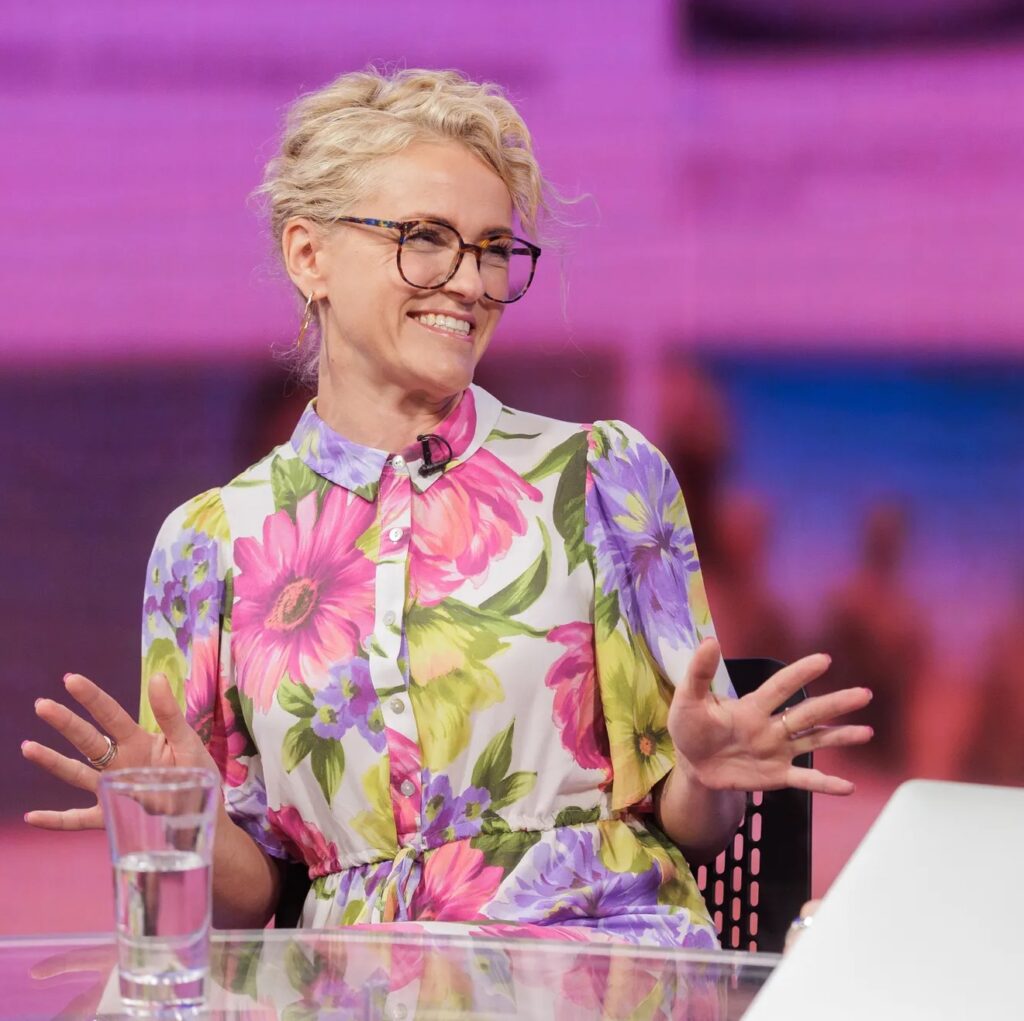
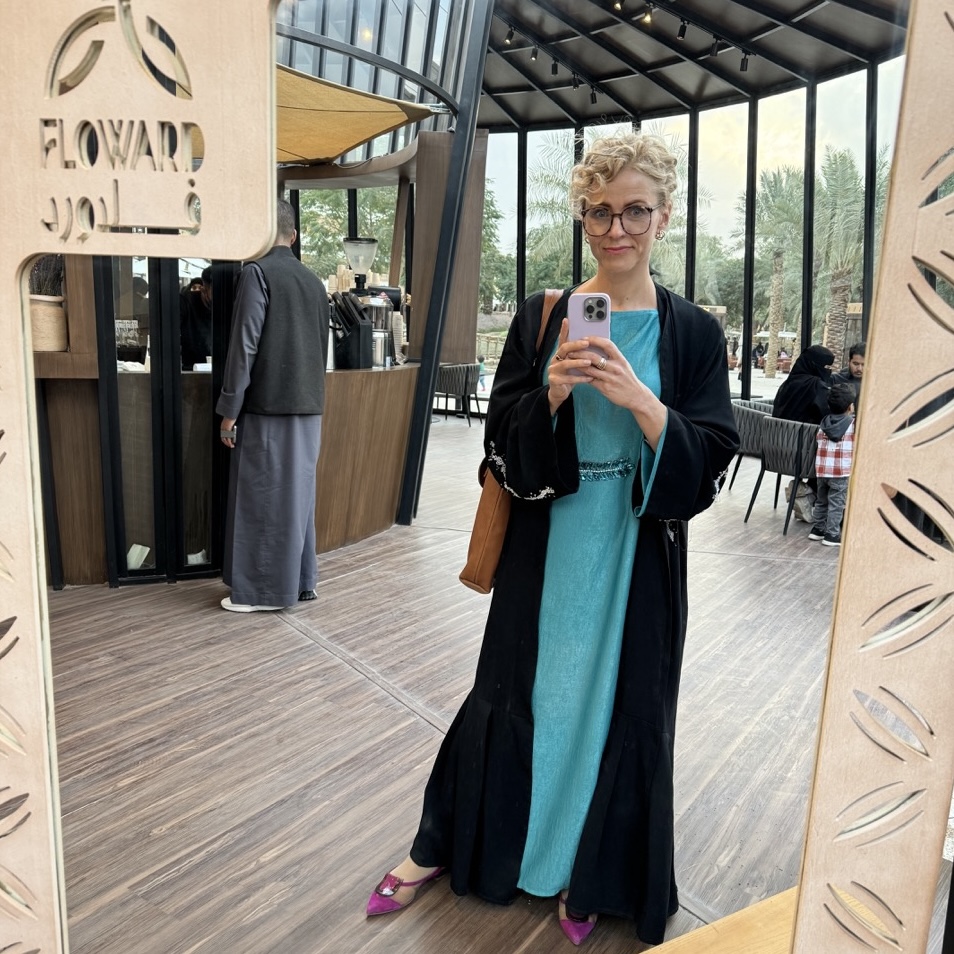
2025, interview by Mirjam
In her professional life, Liina Maria Lepik has led Estonia’s country promotion, commanded boardrooms and navigated global cultures.
What caught my attention was her ability to blend leadership with deep individuality and advocating for secondhand fashion. Her wardrobe remains strikingly authentic, proving that power dressing really doesn’t mean dull conformity.
You can only imagine how excited I was when I discovered that around 80-90% of her wardrobe is sourced secondhand!
She introduces herself as someone who inspires and gets inspired. By colours, by blooming nature and by tasty Cremant among many other things. So, how does a seeker of awe combine being a woman in leadership with dressing mostly in secondhand fashion? Well, that’s exactly what you’re going to discover!
How do you describe your style and what can we find in your closet?
``My style has evolved over the years. I used to dress exclusively in bright, vivid colours, but recently, I’ve started incorporating more neutrals into my wardrobe. That said, my style remains defined by bold prints, striking shapes and a bit of playful volume.
Consciously, I don’t follow any trends – I follow what makes me feel good.
There’s a trend we all know: when women step into leadership roles, their wardrobes often shift to mirror masculine codes – blazers and tailored trousers. It’s a conscious decision I chose not to follow. I’ve kept the energy of femininity alive in my clothing – the unapologetic boldness of it all.
Interestingly, the punchline about my fashion choices is that I’m half colourblind. I can’t always distinguish certain shades – blue and purple can blend into one, red is difficult to see among green. In other words, I wouldn’t be able to spot a strawberry in a field, though blueberries I can find. This actually leads me to something quite delightful: I don’t always know exactly what colours I’m wearing, which means I sometimes dress even bolder than I know.
One would think that being half-colourblind would make you shy away from colour, but it’s the opposite for me. My love for colour has been with me for as long as I can remember – and playing with colours has become part of who I am.”
Where is this boldness in style coming from?
“Back when I worked in a bank, I made a deal with myself - if I ever bought a grey suit, it would mean I’d become a bank clerk, and it would be time to leave. Thankfully, that moment never came!
But my work has often dictated that I need to be professionally presented. One moment I am on a stage as a speaker and another, taking part of business meetings in different countries.
Overall, for me, the common corporate attire lacks excitement, so I have found my ways to dress around it and I test the limits in these settings. The international roles have also pushed me to really test my style limits, one extreme example being my business visit to Saudi Arabia.”
How did you navigate dressing as a woman in business in such a conservative country?
“I just had to test the limits to stay true to myself - whether it meant experimenting with accessories, hair-do or wearing big glasses. Although, I did make sure to stay within the most strict rules not to get in trouble.
But I must admit, in the end it did feel like my identity is being killed. Especially, because I couldn’t really wear anything expressive – no colours or even exciting earrings. Not to mention, that you cannot even speak your mind before you are spoken to.
Such experience made me understand how much I express myself through clothing and colours.”
Tell me more about the source of inspiration for your style?
“The inspiration for my style often comes from films with evocative clothing and women who leave an impression. Take Poor Things, for instance – the grand, billowing sleeves of the dresses are simply unforgettable. And it truly inspired me for some of my statement pieces.
A recent favourite has also been the 2024 documentary about Leni Riefenstahl – a controversial figure, of course, but one who dressed with an undeniable sense of style. Painted lips, dramatic hats – she maintained her elegance even in Nazi Germany. This, particularly during the cold months, reminded me that when it’s gray outside, dressing well is about feeling well.
I’ve also started this playful habit I call camouflaging (in Estonian, 'sulanduja') – the art of blending into my surroundings.
I’ve also started this playful habit I call camouflaging (in Estonian, sulanduja) – the art of blending into my surroundings. Whether it’s a piece of furniture, a car or a work of art, I often discover myself to match some part of the environment and capture it in a photograph. It’s a fun way to play with colours.”
What criterias are most important to you when choosing clothes?
“That has changed over time for me, but the most important thing now is comfort, fabrics that feel good on my skin and a good fit. But also that it matches my mood.
I avoid clothes that wrinkle easily! Previously, looks were more important to me, but now comfort comes first.
When shopping secondhand, I only buy thing that feel 100%. My recent absolute favourite is the same yellow cozy jumper I am wearing right now.”
Where did the secondhand shopping start for you?
“I was a kid when we were still in the Soviet era in Estonia. That means my clothes came from either from my older brother, my mom made them or they were from the German aid packages.
I really didn’t care about the clothes. But when the Soviet era ended and we got access to the “new”, the happiness about anything new was unreal at that point.
After the re-independence, there was a period of feeling undeserved shame for having worn old clothes for a long time. I can see my mom has been influenced by that much stronger, but she is now good at combining new and old.
But a little later, when my daughter was born, I got tired of looking like everyone else, which was the result of all the “new trends” at that point. So secondhand gave me access to something that helped me to be unique and find true variety that you can’t get from the “new”.
The first store I visited at that point as USA Today.”
How much of your wardrobe today is from secondhand sources?
“It’s probably around 80%-90%. I only buy newly produced items when I know I am going to wear them to shreds. Or another option - I know I can pass it on and give it another, second, life. I make sure that I don’t buy anything that would end up in a bin.
I still have some fast-fashion items in my wardrobe from years ago that, until this day, are the ones that serve me every time I’m not sure what to wear.
Take another example – for 5 years I’ve been attending the Estonian yearly entrepreneurship awards gala. And all of my outfits for these events have been from secondhand sources. That includes earrings, bags, shoes and clothes, of course.
I often get compliments for my outfits at such moments and I always proudly state that I got it secondhand.
There is a stigma reply stating that I somehow know how to find items from secondhand but others don’t. It’s absolutely not true though.
There is a stigma reply stating that I somehow know how to find items from secondhand but others don’t. It’s absolutely not true though.
A good example is also a recent welcome ceremony at the Estonian president’s reception, where me and my daughter both wore secondhand dresses. The same goes for the opening event of PÖFF”.
Tell us more about where you shop for secondhand clothes?
“Many of my secondhand items come from the consignment shop near my home in Tallinn - Bazaar. But my most exciting dresses come from Zigrimigriz in Pärnu. So does the bag I am wearing today. At Zigrimigriz, the shop owner Anne is especially great! She inspires you to dress better as a woman and feel full confidence. I always leave that shop with the feeling “where is my damn red lipstick”.
I also love to go secondhand shopping when I travel. I usually navigate cities going between 3 places – secondhand shops, specialty coffee shops and middle eastern restaurants. It’s an excellent way to discover new cities – you will discover a lot more than staying just on the main streets.
I’m glad to say I have rubbed that mindset off my daughter Frida as well.
A good example is a vintage black leather skirt I bought from Rome – I am probably going to wear it forever. Secondhand clothes bought from travels are something that I link memories to. For example – my glasses frames are from Paris.
I also find that buying exclusive items, Estonian design for example, from secondhand is an excellent idea. Buying something new from just one time wear is sad, but if you buy it secondhand, and know you can pass it on, it’s a whole another experience. I do love and appreciate local design, but it’s not sustainable to buy even something like this for only one time wear.
When it comes to physical stores versus online stores, I find shopping in physical stores a lot easier.”
What are your favourite secondhand finds and secret tips?
``My yellow sweater I am wearing today is one of my favourites! Also the coat I’m wearing today.
I also love my green silk shirt from Fankadelik.
The most difficult to find are jeans – finding the good fit is challenge. Jeans are something I wear to shreds, so I always go for a similar model.
As a secret tip – consignment-type secondhand shops are especially good – you can choose the railings of the sellers, that match your style and size the best and go from there. This is really good for someone who is always in a hurry, like me, and wants to optimise their time.
In Estonia, Bazaar is a good place for shopping like this. When you find the person’s railing that matches your style, you can easily leave the store with multiple items.
Another tip is to follow the colours that you like. For me, it means starting from the most colourful pieces.”
I know you for spreading the word about secondhand fashion - tell us more about that?
“I am known for being the loud one about my secondhand finds.
Here’s a funny story. I had a dream about how I was visiting friend at country side. And I wanted to make an impression, so I took golden velvet pants out of my bag and wore them. After this dream, I travelled to London and accidentally found golden velvet pants from a secondhand store. Of course I had to buy them. How often do you see golden velvet pants in secondhand? This is also a story I love telling my friends about these pants!”
How do people react when you say that you got something from a secondhand shop?
“The usual reaction is, of course, “wow really, no way, did you really”.
But I don’t really bother with the opinions. I make it an honour thing. Let’s be honest, we can all go to a Zara and buy a nice piece from the trendy rack. But if you find something cool from secondhand, that’s an achievement. You’ve taken the rough route.
Now I am at the point, where people come to me and ask “well, that’s from secondhand again, right.”. It’s about nudging with tiny steps.
Let’s be honest, we can all go to a Zara and buy a nice piece from the trendy rack. But if you find something cool from secondhand, that’s an achievement.
What would you say to someone who is completely new to shopping secondhand?
“Being scared, in general, is an individual feeling. So for me - one thing is that I really consciously spread the word to inspire people individually. I share my stories with friends.
A good trick is to ask your friend, who is already good at shopping secondhand, to guide you through the beginning. For example, I’ve had my friend, who never goes to a secondhand shop alone, ask me with excitement, if I’d come visit one with her that she saw on her journey. This is a big shift in mindset to notice!
For someone completely new to secondhand shopping and wanting to browse on their own, I would recommend starting with small boutique-like secondhand shops – these are the ones where it’s exciting and comfortable to navigate through, especially compared to the crazy large thrift stores, where you can get lost in the overload of clothes.”
Get exclusive stories for secondhand & sustainable fashion enthusiasts!
Only together we can empower the world to shift ⭐ ! Inspiration, ideas and tips tailored with love directly to your mailbox.
Join our community:
If you are curious about the secondhand-only maximalist and sustainable fashion mindset, connect with me on Instagram!
Some links on this site may be affiliate links, meaning we may earn a small commission at no extra cost to you.


